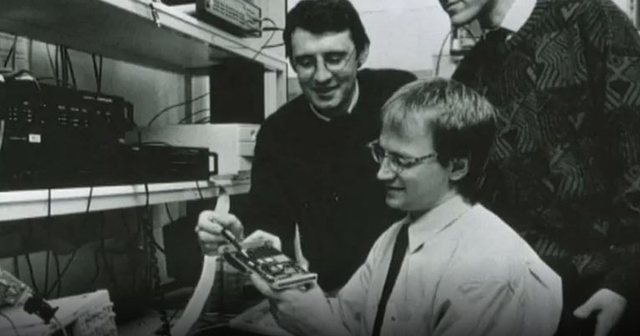
30 years of "mp3": How the audio format from Erlangen conquered the world


Thirty years ago, an audio compression method revolutionized the world of music. The Fraunhofer Institute in Erlangen called this new format mp3. An invention that still shapes our technological lives today.
Bernhard Grill is not easy to find these days. The director of the Fraunhofer Institute for Integrated Circuits (IIS) in Erlangen is constantly on the move from one press conference to the next. 30 years of mp3: many media outlets want to talk to one of the co-founders of that time.
Grill was one of those developers who had been working for years in Erlangen to reduce the size of music files with virtually no loss of quality. In 1995, they finally succeeded. The new audio compression method was ready for the market and was called mp3.
According to Grilli, the computer age was still in its early stages. The name of the new invention was based on file extensions. So, there were three letters available. In an internal vote, mp3 was democratically chosen.
Less is more: the principle of reduction
The new audio format revolutionized the world of music. Ultimately, with applied mathematics and a great deal of knowledge about the human ear, Grill summarizes. The mp3 process simply removes the superfluous parts of the music that are not perceived by the human ear. Moreover, it eliminates precisely the sounds and noises that we do not necessarily hear.
Only what is important to the human ear is preserved. In this way, a music file can be reduced to about a tenth of its original size, without significantly altering the actual signal.
CD burning becomes a popular sport
MP3 changes music consumption habits worldwide. Vinyl records, cassettes and CDs are relegated to the background. New, initially illegal, distribution platforms appear on the Internet. Converting entire CDs to mp3 files becomes a popular sport.
At first, players designed specifically for this format could only store a few songs. However, storage capacity increased rapidly, so that an MP3 player could soon store hundreds of songs. “We may not have realized right away that we were changing the world, but we certainly had that ambition,” Grill notes with a smile. Focusing on the Internet was definitely the right decision at the time.
Revenue in the hundreds of millions
According to its own figures, the Fraunhofer Institute generates revenue in the hundreds of millions with its new invention. The number of employees is constantly increasing. Currently, around 1,200 people work on the Erlangen campus.
The institute's growth was financed, among other things, by licensing the MP3 patent. After its expiration in 2017, successor codecs continue to generate revenue. However, the real winners have been device manufacturers such as Apple, Sony and SanDisk. They generate millions in revenue from the sale of MP3 players.
The following codecs are on every mobile phone
MP3 technology and the subsequent codecs generated by it are now found in almost every mobile phone, streaming service and digital radio, among others. According to Grilli, the fourth generation is currently successfully on the market, and the fifth, with an AI core, is already ready in the laboratory.
Today's most advanced codecs reduce the data transmission rate to ten times faster than mp3. This is important, for example, when transmission speeds are slower or when many people are accessing a signal at the same time. Grill claims that this allows people to watch movies or listen to music while traveling with consistent sound quality. So the success story of this 30-year-old invention is not over yet./ DW

The Ukraine summit that ignored the tough questions
ideas
top
Alfa recipes
TRENDING 
services
- POLICE129
- STREET POLICE126
- AMBULANCE112
- FIREFIGHTER128





























